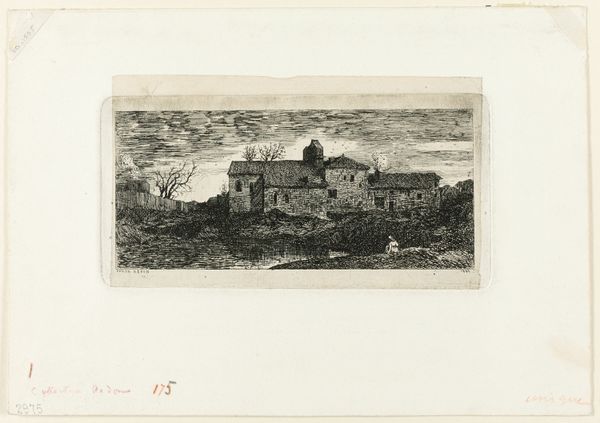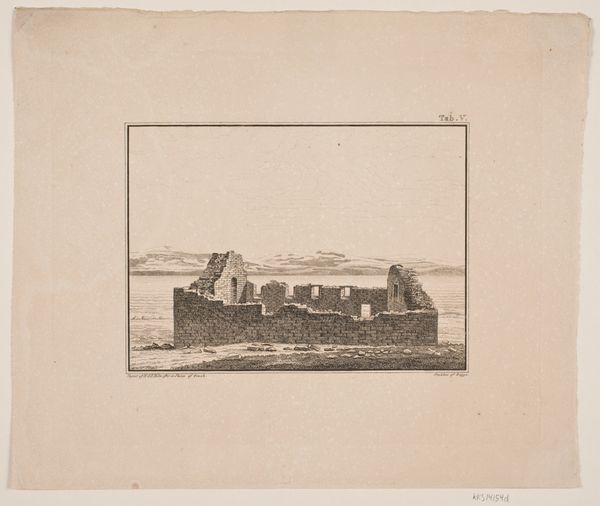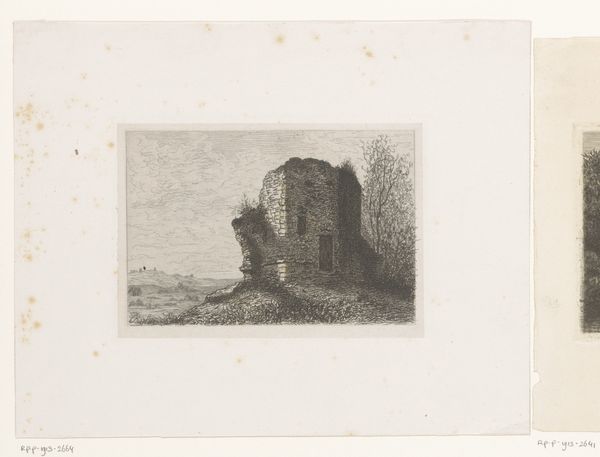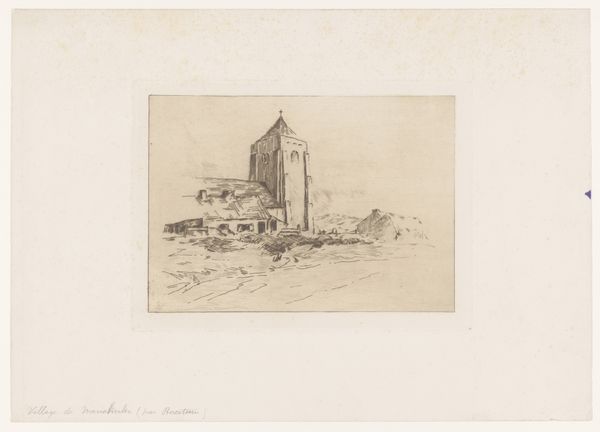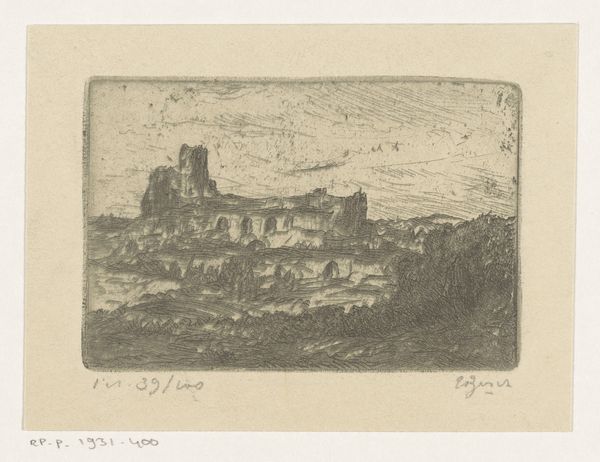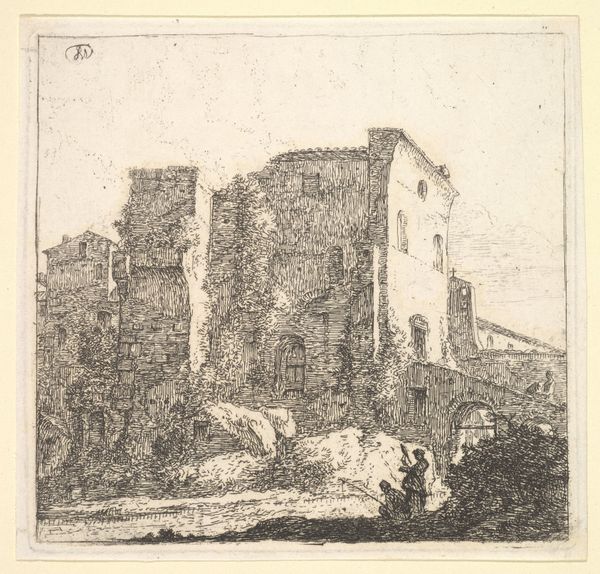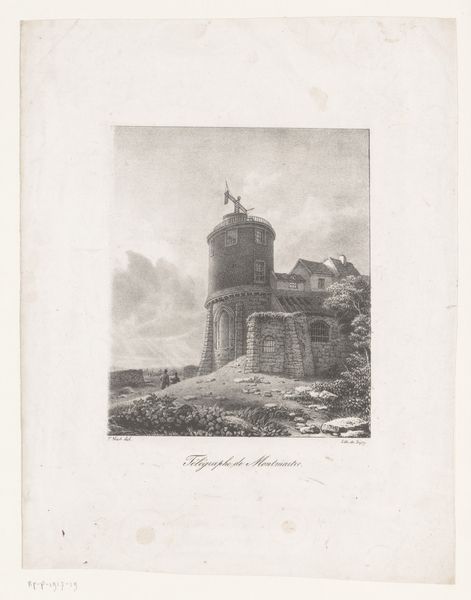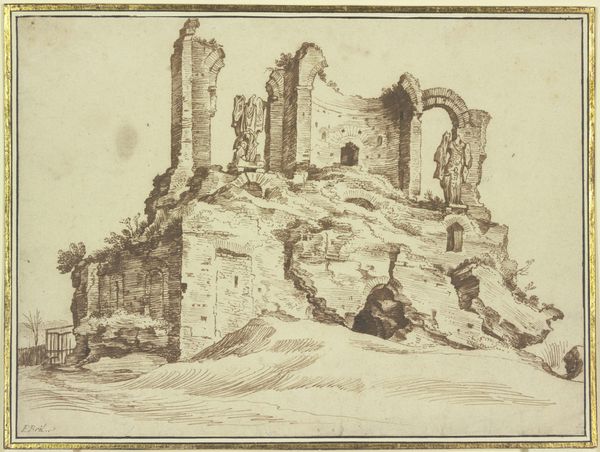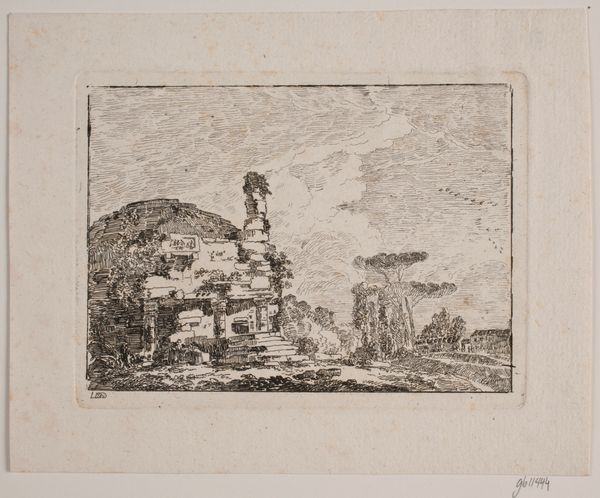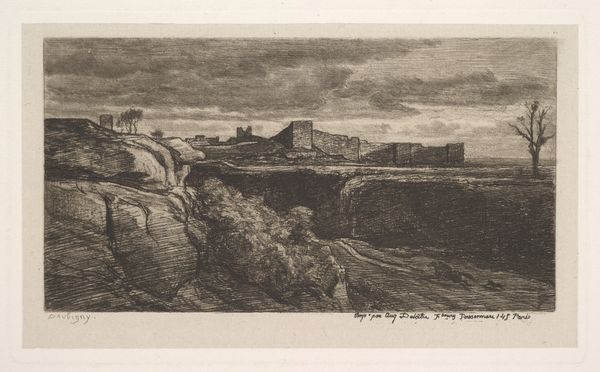
drawing, print, etching, paper
#
drawing
# print
#
etching
#
landscape
#
paper
Dimensions: 120 × 169 mm (image/plate); 190 × 250 mm (sheet)
Copyright: Public Domain
Curator: Standing before us is Donald Shaw MacLaughlan’s 1902 etching, "Old Fort at Ambleteuse," currently housed at The Art Institute of Chicago. Editor: It’s a rather bleak and weathered scene, wouldn't you say? The monochrome palette enhances the rugged texture of the stone fort. Curator: MacLaughlan, an American artist deeply influenced by Whistler, presents us with a study in architectural form. Note the use of line, particularly in defining the massing of the old fort, rendered in etching on paper. How do you read the overall structure? Editor: The way the artist builds the fort is a marvel, constructing light and shadow on that stone surface. He concentrates his efforts in areas that make you appreciate the bulk and height of the structure. However, what were the material conditions? Where exactly was this created? Curator: Ambleteuse is a coastal town in France. It’s fascinating to consider the physical process—the biting of the plate, the wiping of the ink, the pressure of the press—all contributing to this very singular impression, this tangible object we have before us today. I see this landscape tradition combined with printmaking practice creating an image that talks about our intervention in the environment. Editor: It’s undeniable that his masterful manipulation of light lends a dramatic and evocative mood. It’s hard to miss his technical prowess. He also cleverly draws your gaze upwards along that rounded turret! It’s pure formalism. This piece evokes a sense of nostalgia. I wonder what informed it. Curator: Possibly reflections on past engineering feats during periods of both warfare and construction in this region. A somber observation, reflecting upon our complicated interactions with place and the built environment through processes of creation and decay. The print’s physicality anchors those grand, elusive themes of landscape to more grounded ideas concerning human involvement with land usage. Editor: Well, through my focus on its intrinsic qualities, its balance and mood, and your view on its creation as process with human and geographic ties, this artwork provides much for reflection. Curator: Indeed; this layered print offers ways for multiple interpretations. Hopefully we gave people the push to consider one possible interpretation on their own.
Comments
No comments
Be the first to comment and join the conversation on the ultimate creative platform.
